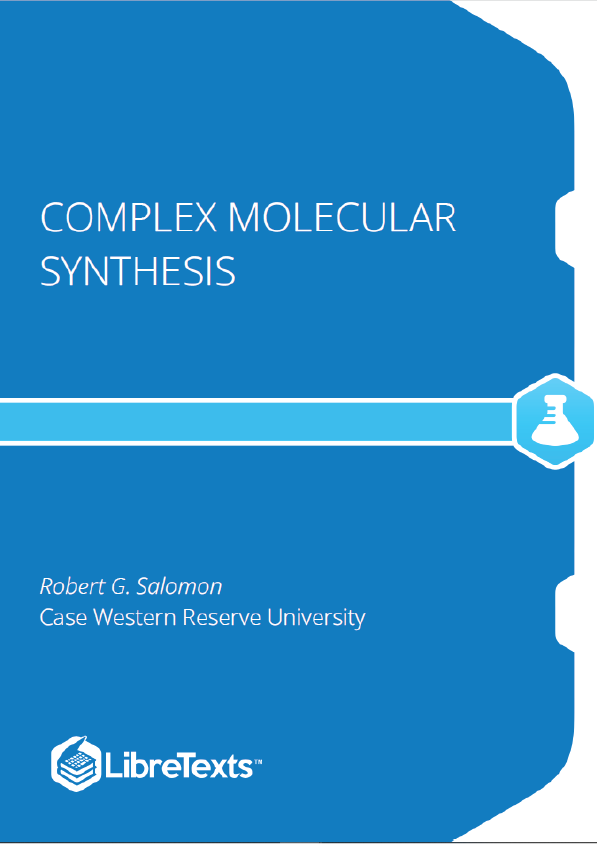The challenge of synthetic planning is the identification of a set of available precursors that can be combined and manipulated by a series of chemical reactions to provide the synthetic target. Analysis does not a priori have to proceed from target to starting materials along the exact reverse of the actual synthesis (i.e. retrosynthetic analysis), but this protocol is highly effective for the analysis of structurally complex molecules because it provides a logical basis for the systematic recognition of potential synthetic pathways. For example, recognizable characteristics of the precursors predispose them toward chemical reactions that generate the target. These characteristics are the result of certain structural features of the precursors (e.g. functionality), the residue of which is often apparent in the target and from which the precursor can be inferred. The ⇒ symbol is used to indicate one or more backward steps, often referred to as dislocations or transforms of the target to a precursor. Bonds severed in a dislocation (i.e. generated during the synthesis) are indicated by drawing wavy lines through the appropriate bonds. Furthermore, the target will generally be shown to the left of the ⇒ symbol and the precursor(s) to the right. The dislocation may correspond to a single known chemical reaction, or a hypothetical reaction, or may be the result of a multistep retrosynthetic process. For example, the hydroxyl group in a secondary alcohol may be viewed as the residue of the carbonyl functional group that predisposes a precursor aldehyde toward reaction with a Grignard reagent to deliver the synthetic target. The C=C bond in a cyclohexene may be viewed as the residue of the pi system in 1,3-butadienediene that predisposes this precursor toward a Diels-Alder cycloaddition with methyl acrylate to deliver the synthetic target.
The following dislocations of some molecules that we will consider more thoroughly in subsequent chapters show only the targets and a set of starting materials, precursors that are readily available organic chemicals. Thus, the overall strategy of each total synthesis is summarized in a single dislocation of the target. The molecular numbering system of the synthetic target is adopted to designate the corresponding atoms of synthetic precursors. The examples in Charts 1-3 provide a glimpse of the diversity of solutions possible for a particular synthetic problem. The systematic procedures which guide the invention of such strategies are the focus of this book.
Three overall strategies are presented in Chart 1 for the total synthesis of prostaglandin ( ) a fatty acid derivative. These examples constitute a tiny sample of the numerous strategies that have been applied to the total synthesis of this important natural product. These and other syntheses of prostaglandins will be considered in detail in chapter 3. Each strategy in chart 1 uses the same starting material 1 for carbons 1-5 of the upper side chain and similar starting materials 2 or 3 for carbons 14-20 of the lower side chain. But very different precursors are employed for the C6-7 and C8-13 portions of the target. Thus, the Woodward strategy involves ring contraction of a six- membered ring to generate the cyclopentane of C8-12 with C13 appended and glyoxalic acid to provide carbons 7 and 8. The Brown strategy uses α-chloroacrylonitrile for these carbons and acetoxyfulvene as precursor for the portion of the target which is provided by cyclohexanetriol in the Woodward synthesis. Turner’s strategy carves the cyclopentane nucleus, C8-12, from the readily available Diels-Alder dimer of cyclopentadiene. Thus, carbons 9-11 are derived from one molecule of cyclopentadiene while carbons 6-8 and 12-13 are derived from a second molecule of cyclopentadiene.











